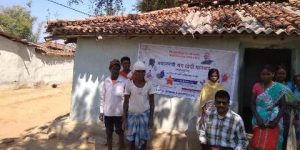Geographic Information System (GIS) plays a crucial role in decision support for the control of vector-borne diseases in India. Here are several ways in which GIS is applied to enhance decision-making and control measures:
- Spatial Analysis of Disease Patterns:
- GIS allows health authorities to analyze and visualize the spatial distribution of vector-borne diseases. This helps identify high-risk areas, understand disease patterns, and allocate resources effectively.
- Epidemiological Mapping:
- GIS is used to create epidemiological maps that depict the prevalence and incidence of vector-borne diseases. These maps help in identifying hotspots, tracking disease spread, and prioritizing intervention areas.
- Vector Habitat Mapping:
- GIS facilitates the mapping of vector habitats, such as breeding sites for mosquitoes. Identifying and monitoring these habitats enable authorities to implement targeted vector control measures.
- Climate and Environmental Factors:
- GIS integrates climate and environmental data with disease information to understand the impact of weather patterns on vector-borne diseases. This helps in predicting disease outbreaks and planning preventive measures.
- Risk Assessment and Early Warning Systems:
- GIS-based risk assessment models incorporate various factors like climate, land use, and socioeconomic conditions. Early warning systems can be developed to alert authorities about potential disease outbreaks, allowing for timely interventions.
- Resource Allocation and Planning:
- GIS helps in optimal resource allocation by identifying areas with the highest disease burden. This includes deploying healthcare personnel, distributing medications, and implementing vector control strategies based on spatial analysis.
- Monitoring and Evaluation of Control Programs:
- GIS is used to monitor the effectiveness of vector control programs. By tracking changes in disease prevalence over time, decision-makers can assess the impact of interventions and make data-driven adjustments to control strategies.
- Community Engagement and Education:
- GIS-based maps and visualizations are valuable tools for community engagement and education. Local communities can better understand the risk factors and actively participate in disease prevention efforts.
- Integration with Health Information Systems:
- GIS can be integrated with health information systems to create a comprehensive data platform. This integration enhances data sharing and collaboration among healthcare providers, researchers, and policymakers.
- Surveillance and Response Planning:
- GIS supports the design of efficient surveillance systems for vector-borne diseases. Real-time data collection and analysis aid in planning rapid and targeted responses to emerging health threats.
- Cross-Border Disease Management:
- In regions with cross-border disease transmission, GIS facilitates collaboration between neighboring countries. Shared data and coordinated responses help in preventing the spread of vector-borne diseases.
- Modeling and Simulation:
- GIS allows for the development of models and simulations to predict the impact of different control strategies. Decision-makers can evaluate the effectiveness of interventions before implementation.
By leveraging GIS in decision support systems, authorities can adopt a proactive approach to vector-borne disease control, leading to more effective prevention, early detection, and response measures. This holistic and data-driven approach contributes to better public health outcomes and resource optimization.








